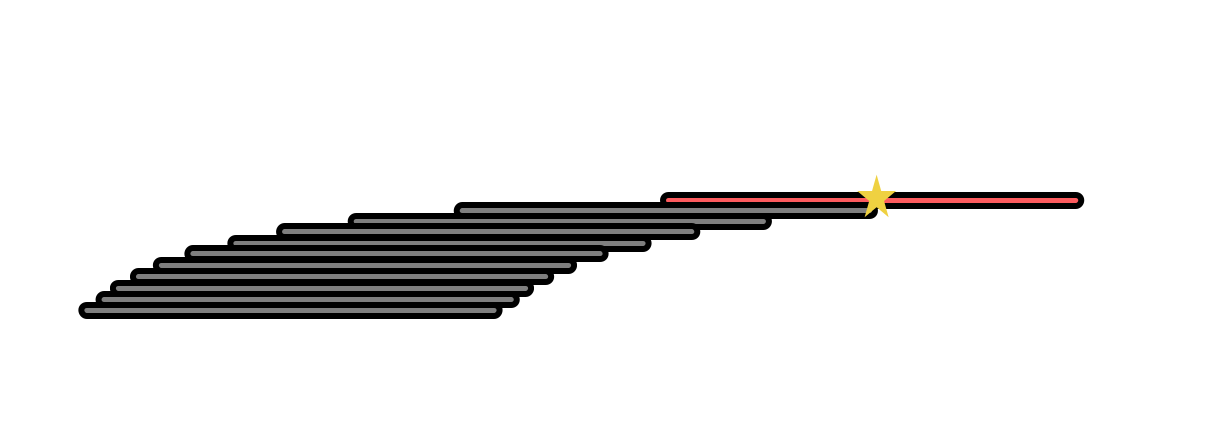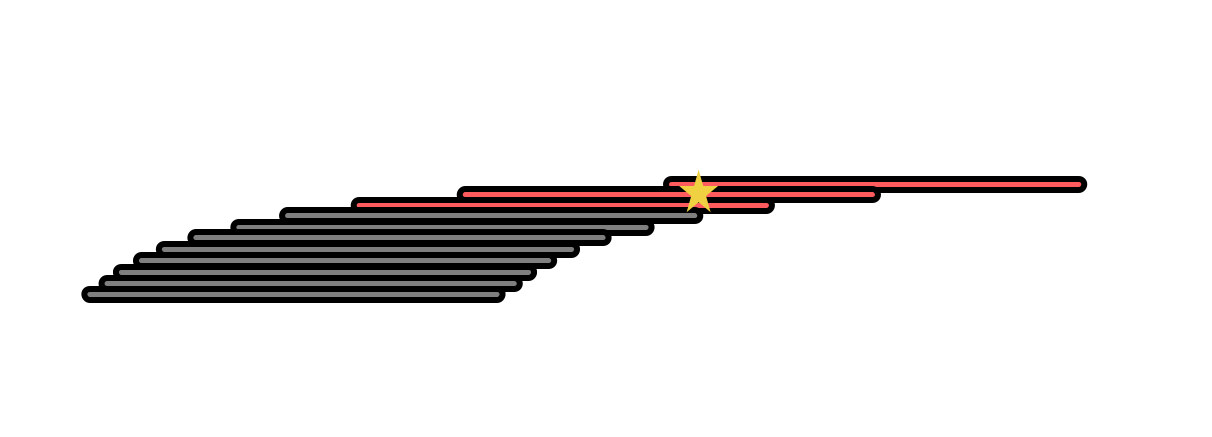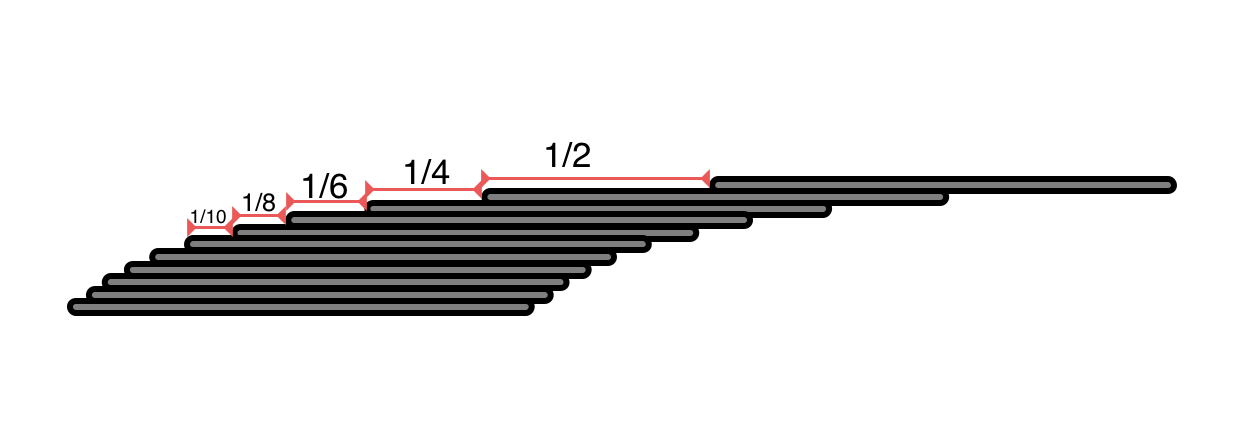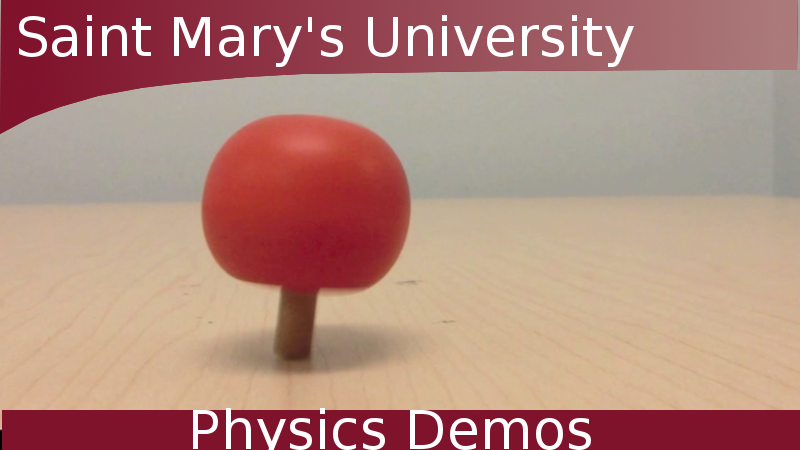A stack of objects can exhibit impressive overhang when properly balanced!
Watch The Video:
Teachable Topics:
- centre of mass
- free body diagrams
- arches
Theory:
A stack of cards will not topple so long as the centre of mass of all cards above a certain point lies on top of the card below. The centre of mass of a single card is at the centre of the card. The top card can thus overhang from the card below by 1/2 of its width.
The yellow star denotes the centre of mass of the top card, which lies just on the edge of the card below: 
The centre of mass of the top two cards is halfway between the centre of mass of each card, allowing the second card to be slid off the pile by 1/4 of its width.
The centre of mass of the top two cards is denoted by the yellow star, which lies on the edge of the card below: 
Likewise, the centre of mass of the top three cards is denoted by the yellow star, and lies on the edge of the card below:
The centre of mass of the top three cards allows the third card to be slid off the pile by 1/6 of its width, while the fourth can be slid by 1/8, the fifth by 1/10, and so on...
This is a harmonic series, so the overhang for N cards can be written as follows:

The maximum possible overhang of the top cards in a deck looks like:

For 52 cards, the maximum possible overhang is 2.27 times the width of a card.
Apparatus:
- deck of playing cards ("Star Trek" branded cards optional)
- or metre sticks
- or any set of regular, preferable flat, objects
Procedure:
- (Note: the metre sticks are easier to stack as they are longer and allow easy measurements)
- slide the top metre stick 1/2 way off the pile, just until it is about to fall
- slide the second metre stick 1/4 of the way off the pile (carrying the uppermost metre stick with it)
- slide the third metre stick 1/6 of the way off the pile
- continue as such until you run out of metre sticks
- (Another note: if the metre sticks are warped the pile is liable to topple, so try to use the flattest sticks you can)






